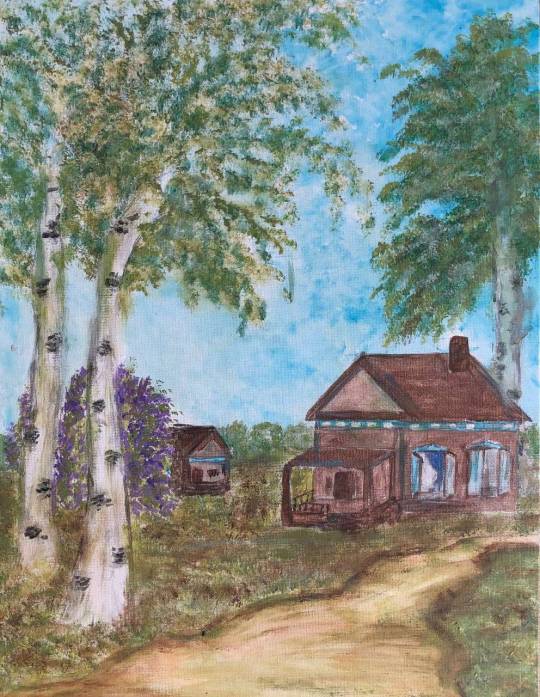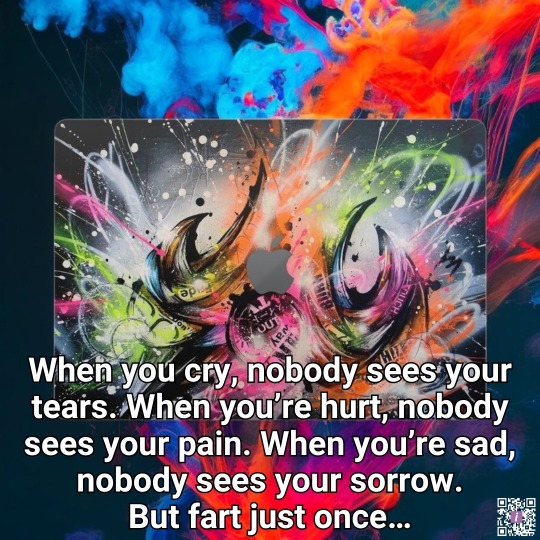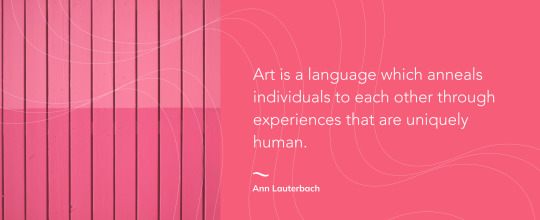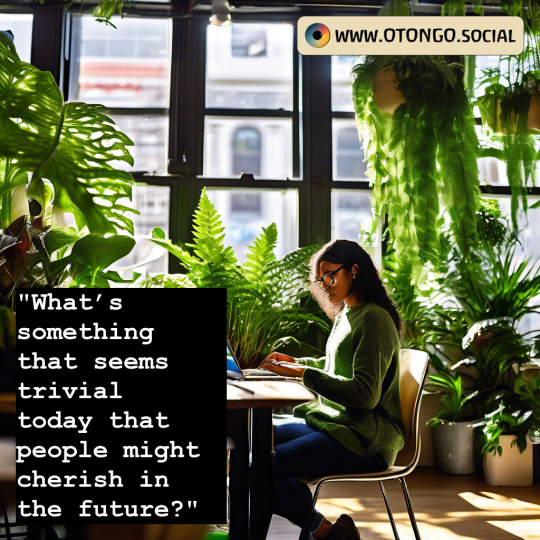#humanexperience
Explore tagged Tumblr posts
Text

In "Stories of Stigma", author Greg Hitchcock explores the deeply personal and societal impacts of stigma, offering a raw and poignant look into the lives of those affected. Through compelling narratives, Hitchcock challenges perceptions and promotes understanding. Don't miss this thought-provoking work that dives into the complexities of human experience.
Discover more about Greg Hitchcock and his impactful writings at https://www.pegasusdigitalmedia.com/about.
9 notes
·
View notes
Photo

Dive into "Hidden Whispers," my 2019 piece that captures the intricate tension of human emotions 🌊. With soft brushwork and warm tones, it contrasts isolation with connection, embodying love, pain, and hidden truths. Let the figures reveal their stories. 🎭✨
4 notes
·
View notes
Text
"Echoes of the Soul"
It is what it is, We experience bad days and good days, Just like a clock ticking away each day, Same time, different days, different weather, But the same air, land, and atmosphere.
We often wonder when our struggles will end, The life we have, the end days, When will our last day arrive, The day we leave this world behind, The day we return our bodies to the land?
The day we bid farewell to our loved ones, Our broken and beaten memories, And the sadness that lingers, From afar, this world may seem beautiful, But poverty and war threaten our existence.
What does the afterlife hold for us? Are we perishing forever, or will we live again? Will we find joy after leaving this world, Or does it all end in the grave? Is there an afterlife?
Father, provide us with answers to these profound questions.
#Mortality#Afterlife#ExistentialCrisis#LifeStruggles#HumanExperience#Poetry#FreeVerse#SpokenWord#EmotionalExpression#DeepThoughts#Hope#Resilience#Faith#InnerStrength#PersonalGrowth
4 notes
·
View notes
Text
Embers at First Light: A Child’s Rage
Inspired by Dylan Thomas’ “Do not go gentle into that good night”Personal adaptation of Dembe Zuma’s Final Monologue
A shared destiny. With silent certainty, death awaits us all. Death’s significance is inherently dissolved by the inevitability of fate’s call. What truly matters? Our relentless search; what we pursue, what we discover. how to heal, how to love, how to grow. How we Live. We cherish these children, more than anyone will ever know. Their remarkable refusal to go quietly into that good night. Their fight for life. A fight in spite. Imposed by dusk in countless ways, yet fiercely committed to the day’s embrace. When confronted by the silence of twilight, they defy in rage. The rage of life, To rage against the dying of the light. A blaze to capture moments of peace, play, and joy. Their journey—an innocent and curious endeavour to explore life with an unwavering passion—is perhaps the most profound path one can take. Inconceivable that their spark would fade—freed of wake, into that good night. Our time with them, our time together, is never about an ending. It is always about the odyssey, about discovery, about a child’s everlasting reminder—showing us, imploring us; to rage. Do not play gentle in this fight. Rage. Tend the embers of their bright light. Rage, rage and ignite—
#Poetry#SpokenWord#DylanThomas#LiteraryAnalysis#ExistentialThoughts#DeathAndLife#Fate#Timeless#Philosophy#CreativeWriting#EmotionalWriting#Inspiration#ArtOfWords#ReflectiveWriting#LifeAndDeath#RageAgainstTheDyingOfTheLight#Literature#MeaningOfLife#PoeticVision#ChildhoodWonder#LifeLessons#Journey#Healing#Love#Joy#Adventure#HumanExperience#FindingMeaning#Courage#the blacklist
3 notes
·
View notes
Photo

(via self-awareness is 🗝 in 2023 | How to start yoga, Yoga philosophy, Yoga inspiration || Curated with love by yogadaily)
#musingsbymadeleine#mla#madeleineluisearena#yoginis#matifyfam#pinchapractice#pinchaplay#yogashapes#pinchahollowback#pinchamayurasana#forearmstand#humanexperience#alignedliving#selfawarenessjourney#livemindfully#yogaphilosophy#yogasutras#knowyourself#selfstudy#svadhyaya#yogaphotography#armbalance#whitecurtains#shadowplay#yoga#yogi#yogini#yogainspiration#yogaposes#asana
25 notes
·
View notes
Text
we humans
we humans are constantly intertwined body and soul because our hands are constantly outstretched. we can't help but spread our fingers and open our palms, our hands were made for love. why else would your fingers interlock with mine and never really let go not even if you forget me. not even if we both fade out together. we humans are built to facilitate love we have no maximum capacity, if I love you I will always love you. and if you love me, you'll think of me fondly when you hear my favourite song.
#wehumans#human#humans#humanexperience#humancontact#love#touching#hands#intertwined#iwillalwaysloveyou#favouritesong#thinkofmefondly#connection#humanconnection#poetry#amaturepoet#youngpoet#poets#youth
3 notes
·
View notes
Photo

When you cry, nobody sees your tears. When you’re hurt, nobody sees your pain. When you’re sad, nobody sees your sorrow. But fart just once..
Featuring You Apple MacBook Skin
#InspirationalQuotes#LifeTruths#RealityCheck#DeepThoughts#NobodyCares#LifeStruggles#UnseenPain#HumanExperience
0 notes
Text

We Own Nothing, Yet We Have It All By LazyMoon Part-01
#We Own Nothing#Yet We Have It All#By LazyMoon#WeOwnNothing#LifeReflections#Poetry#ExistentialThoughts#Mindfulness#LifeAndDeath#ChasingDreams#Heartache#PhilosophyOfLife#EmptyHands#Afterlife#HumanExperience#TruthInWords#PoetryOfTheSoul#LifeJourney#WeHaveItAll#LettingGo#SelfReflection#EmotionalJourney#TheMeaningOfLife#LifeAndLove#PersonalGrowth#Existence#LiveInTheMoment#LoveAndLoss#LifeQuestions
1 note
·
View note
Text
Chilling Story from Karaza | Intruders, Netflix, and Ice Cream | Israeli Trailblazers Show
youtube
A surreal and disturbing tale from the residents of Karaza, who were hiding in terror for their lives as intruders from Gaza, not militants but civilians, occupied their home—streaming Netflix, having ice cream from their freezer, and settling in as if the house was their own.
#shockingstory#realstories#survival#unexpected#fearandchaos#humanexperience#eyewitness#bizarreevents#unbelievable#trueevents#Youtube
0 notes
Text

Art is a language which anneals individuals to each other through experiences that are uniquely human. http://dlvr.it/TJryw6
0 notes
Photo

What’s something that seems trivial today that people might cherish in the future?
#AuthenticConnections#FutureCherish#MeaningfulMoments#CreativityInWorkspace#TrivialToTreasure#SpringVibes#HumanExperience#WorkplaceHarmony#CaptureTheMoment#InspirationEveryday#ConnectGenuinely#MotivationDaily#ExploreTogether#InnovateAndCreate#PositiveChange#CommunityMatters#GrowthMindset#CollaborationOverCompetition#FutureFocused#EmbraceTheJourney
0 notes
Text
Croissants n' Arms
On the 18th of May in 2018, Margaret Flowers had just turned 73. She decided to make pastries for her grandchildren—a couple of them students at Santa Fe High School—as she knew, they would be coming over later that evening.
She was beyond excited to give them these snacks, as evident from the large smile she had on her face waking up.
She woke up early at around 6 am, went to her little cottage kitchen, where she made her cottage food she sold at markets! She egan to pull and gather various ingredients—off shelves and out of cabinets.
At around this same time, seventeen year old Dimitrios Pagourtzis was finally commencing his plans. He was barely halfway to eighteen. No one would ever expect this… he was on the football team and he joked around with some friends the day before…
He knew the laws well, he was honor roll. It’s… uncertain why he began to pack his bags with the 12-gauge Remington and the .38-cal Rossi he ordered from the internet.
I mean—FedEx even delivered without an adults signature, months back. Just coz, he managed to order from some store and click, ‘no adult signature needed!’
And, now it’s 7 am…
Mrs. Flowers had spent a while meticulously meting out each ingredient.
Separating them into small bowls, she took her time to slowly add each part, croissants take time.
She stored the ingredients in the refrigerator and, around 7:30, she was ready to start the process of yeast activation.
She knew her grandson was getting ready to go to art class, and she was beyond excited to prepare the croissants that he called his faves.
Warm water, Fleischmann’s, and sugar… where was the sugar?
She dug all through her cabinets, and in the first few minutes, came up flat.
Where was it? She asked herself.
At 7:32 am—Dimitrios had begun singing “Another One Bites The Dust”, spraying scatter shot all around the door of an art classroom.
He broke the window with a shot… then opened the barricaded door.
Inside, and mostly unknown to him, were several young men and women— alongside two teachers.
Well… mostly unknown… because the first person he happened to encounter in the art classroom… was a student he did know—and to which he said, “surprise”, firing the 21-gauge in their chest.
He ran into a few cops before heading into the ceramics room hallway. They shot at each other, the cops being injured and the kid getting to the hallway.
In the ceramics room, he encountered another cop and they were able to injure Dimitrios.
The cops having managed to injure Dimitrios’ pride—got him to surrender.
Still sadly—ten died and fourteen were injured.
After about thirty minutes of looking, Mrs. Flowers did finally find that sugar she so desperately needed.
She thanked God for that!
Little note:
If you have read this story, we hope the message is clear. While we aren’t condemning the rightful ownership of weapons, we are condemning the attitude that our democracy has facilitated in regards to justice versus rights.
Everyday in our country we fight for our rights, and everyday in our country someone could be fighting for their life. This is why we should all try better to understand the delicate topic of lethal force and better understand these warnings.
Regardless of warnings the future is scary… and just like always before, there is still the human factor.
As much as we fight for our own equal rights, for the most part, we are all at mercy to the whims of someone else.
This is why, we must all be careful when it comes to our lives and definitely to these weapons.
We can try tp control our own lives.
Other people have control over theirs—who is to say, they might not try to interrupt or manipulate yours?
#speculative fiction#horror#liminal reality#humanexperience#gunshot#life#school shooters#introspection#philosophy#selfreflection#empathy
0 notes
Text
Experiencing Life Through My Eyes
I am here simply to experience human life on Earth—through the eyes of César, through his memories, his tastes, his scents, textures, and emotions. Whether in small details or grand moments, everything is part of this vast and immeasurable universe. This is how I see and feel life today, here on Earth.
#HumanExperience#LifeOnEarth#MindfulLiving#SoulPerspective#SpiritualReflections#Existence#SensoryExperience#EmbracingLife#LivingInTheMoment#blog#gay#quote#angel#dear diary#selfdiscovery#healing#personalgrowth#mindfulness#awakening
0 notes
Text
Modern Legends and Their Powerful Messages
Quote:“Legends are lessons carved in the soul of humanity.” Legends endure because they resonate deeply with our shared human experiences. They are more than entertaining stories; they are vessels of wisdom, courage, and caution passed down through generations. This quote reminds us that legends—whether born of myth, history, or fiction—carry lessons that shape our understanding of the world and…
0 notes
Text
[T~8]
What If We’re the Poetry?
Have you ever wondered if we’re the universe’s attempt at writing poetry?
Think about it.
Every laugh is a rhyme,
Every tear a metaphor,
Every scar a verse.
We’re messy, unedited stanzas, stumbling through pages—searching for meaning while already being it. Maybe we don’t need to understand the whole poem to be beautiful.
Maybe just being is enough.
0 notes
Text

Currently re-reading Sherry Turkle's Alone Together—and honestly, it’s been a slightly unsettling read. 📖 The book delves into our evolving relationship with technology, particularly the rise of social robots designed to replace human connection. From robot dogs and Furbies to children’s companions and elder care, this rapid technological progression raises a critical question:
Are we forgetting that nothing can truly replace the presence and compassion of another human being?
One point that really struck me: 📱 “Studies show that if two people are having lunch, a cell phone at the table steers the conversation to lighter subjects, and each party feels less invested in the other. It’s not surprising. Each person in the conversation knows that with a phone on the landscape, you can be interrupted at any time.”
This resonates deeply. I already try to keep my phone out of sight during meaningful conversations, but seeing the science behind it reinforces how essential it is to be present.
Other powerful quotes from the book: 👉 “We seem determined to give human qualities to objects and content to treat each other as things.” 👉 “Technology makes us forget what we know about life.” 👉 “Where we examine the assumption that we are getting something important from these new technologies, we must ask whether a technology expands our capacities and possibilities or exploits our vulnerabilities?” 👉 “People are lonely. The network is seductive. But if we are always on, we may deny ourselves the rewards of solitude.”
As a designer, these insights are crucial. The projects I aim to be a part of are not just about bridging the gap between humans and the natural world—but also about bringing us closer to each other.
Turkle’s research is a powerful reminder to reflect on our relationship with technology and consider how we can shift toward more compassionate, human-centered designs. 🌿
#humanconnection#digitalage#alonebutconnected#technologyanddesign#socialrobots#ethicaldesign#humanexperience#consciousdesign#compassionateinnovation#designresearch#digitaldetox#presenceovertechnology#futureofdesign#humanityfirst#empathyindesign#solitudeandconnection#designforsociety#rethinkingtechnology#visualcommunication#graphicdesign#designer#design research#design inspiration#AI#visualstorytelling
0 notes